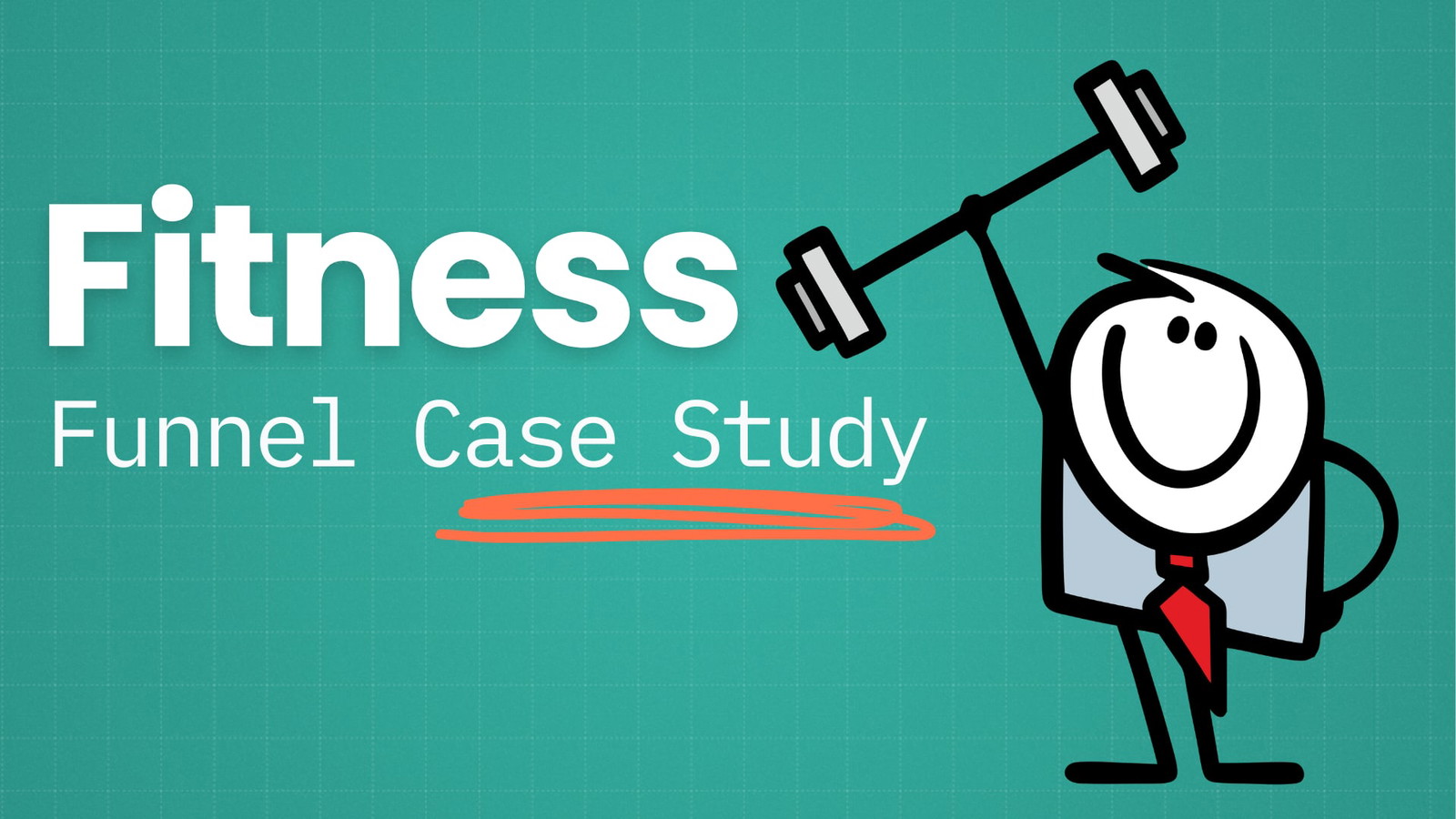Starting a fitness blog is a great way to help others achieve their health goals and earn substantial income while you’re at it.
You can trust us to help you build one. At Authority Hacker, we’ve guided over 15,000 students on their journey to creating successful, profitable blogs across various niches, including the thriving world of fitness.
We’ve also unlocked the secrets to monetizing a blog effectively, as evidenced by our own substantial blogging income.

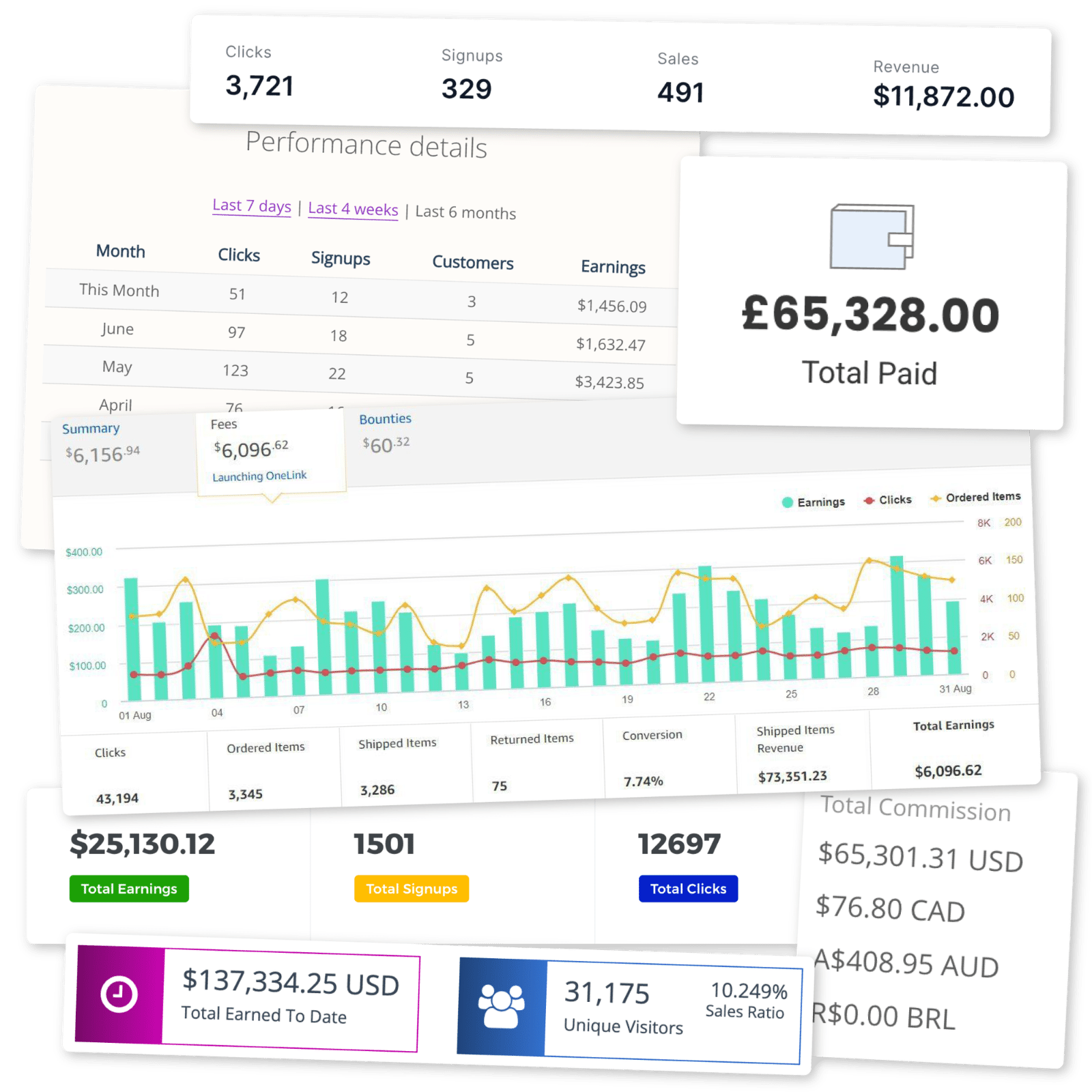
To help you build your own blogging empire, we’ve distilled our knowledge into this comprehensive 11-step guide on how to start a fitness blog.
Why Start a Fitness Blog
There are several reasons to consider launching your own fitness blog – the first of which is making money.
Affiliate marketing is one of the most popular ways to monetize a blog. Our affiliate marketing stats show that affiliate marketers in the health & fitness niche earn an average of $7,194 per month. There are also other ways to make money, including display ads, selling your own products, and offering coaching services.
Fitness blogging is also an excellent way to connect with a growing online community of health enthusiasts. You can learn from other experts in your niche, expand your skills, and build valuable relationships.
You can even become a fitness influencer, sharing blog posts alongside pictures, videos, and tips on social channels like TikTok, YouTube, and Instagram.
Successful Fitness Blog Examples
Let’s take a look at three successful fitness blog examples:

Nerd Fitness
Nerd Fitness provides scientific training programs and advice for people who want to level up their fitness.

Garage Gym Reviews
Garage Gym Reviews publishes authentic reviews of home gym products, including treadmills, weights, supplements, and more.
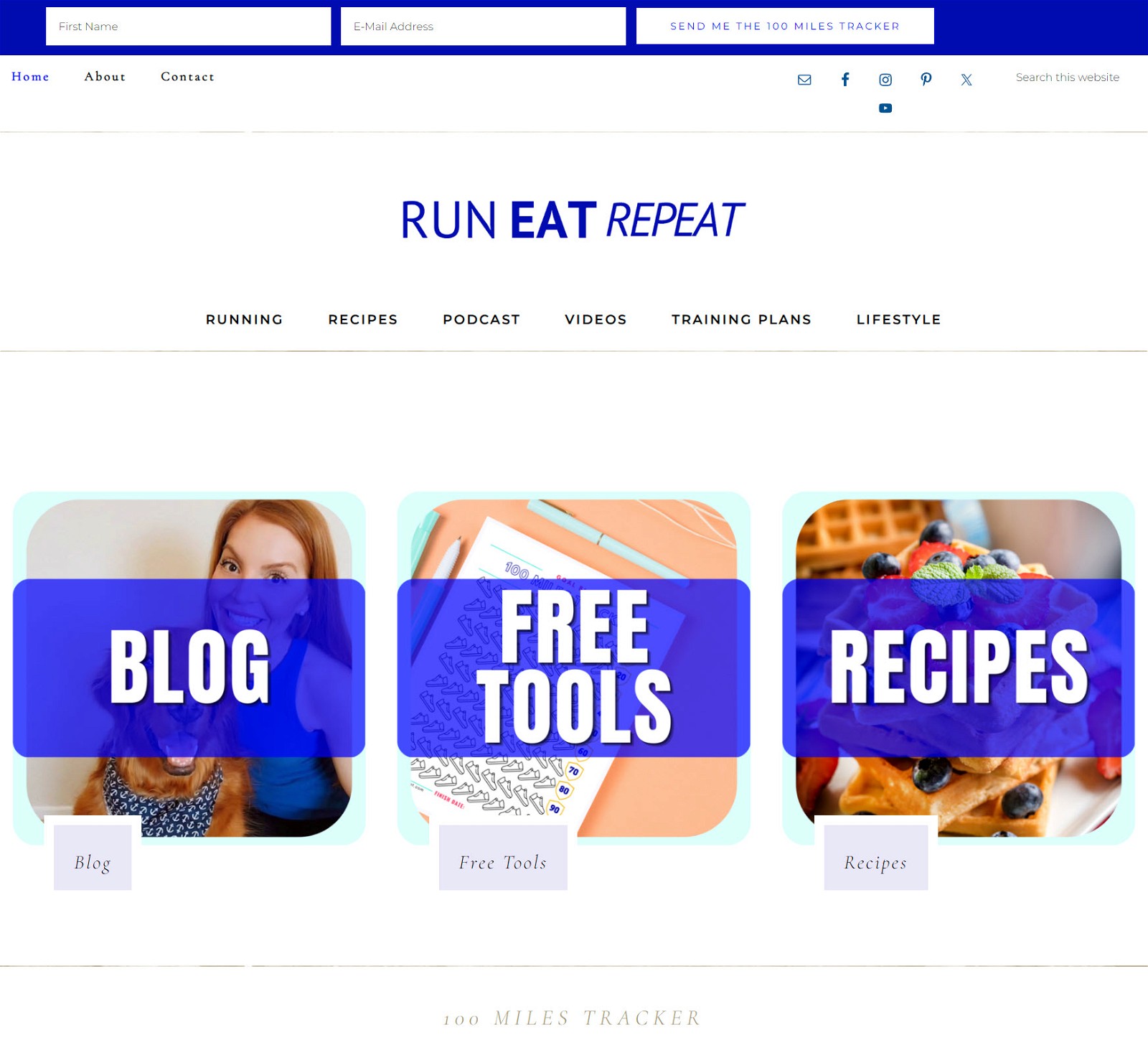
Run Eat Repeat
Run Eat Repeat is a personal blog by Monica Olivas. She writes posts about long-distance running advice, race recaps, recipes, and similar topics.
How To Start a Fitness Blog in 11 Steps
Let’s look at the specific steps in starting a fitness blog.
1 Choose Your Fitness Blog Niche
The fitness niche is saturated with established blogs, making it hard to stand out with a new blog.
To make it easier to build an audience, you should pick a fitness sub-niche to focus on. Ideally, it’ll be something you’re passionate about.
Here are a few possible sub-niches you could write about:
- Functional Fitness: Cover exercises for everyday activities and injury prevention.
- Strength Training: Explore weightlifting techniques, progressive overload, and muscle-building nutrition.
- HIIT & Plyometrics: Share high-intensity interval training workouts and plyometric exercises for power.
- Running & Cardio: Discuss proper running form, cardiovascular endurance, and aerobic conditioning.
- Flexibility & Mobility: Touch on stretching routines, foam rolling, and improving range of motion.
- Senior Fitness: Topics like low-impact exercises, balance training, and maintaining muscle mass with age.
- Pre & Postnatal Fitness: Share safe workout modifications and nutritional needs during pregnancy and postpartum.
- Sports-Specific Training: Provide targeted workouts and drills to improve athletic performance in various sports.
Once you have a few ideas, you must qualify them for traffic. It’s not worth blogging about a topic no one is interested in!
First, search through blog aggregators like Detailed and find relevant websites.
Once you’ve found a website that you like the look of, you can use Ahrefs’ Organic Competitors report to find similar blogs.
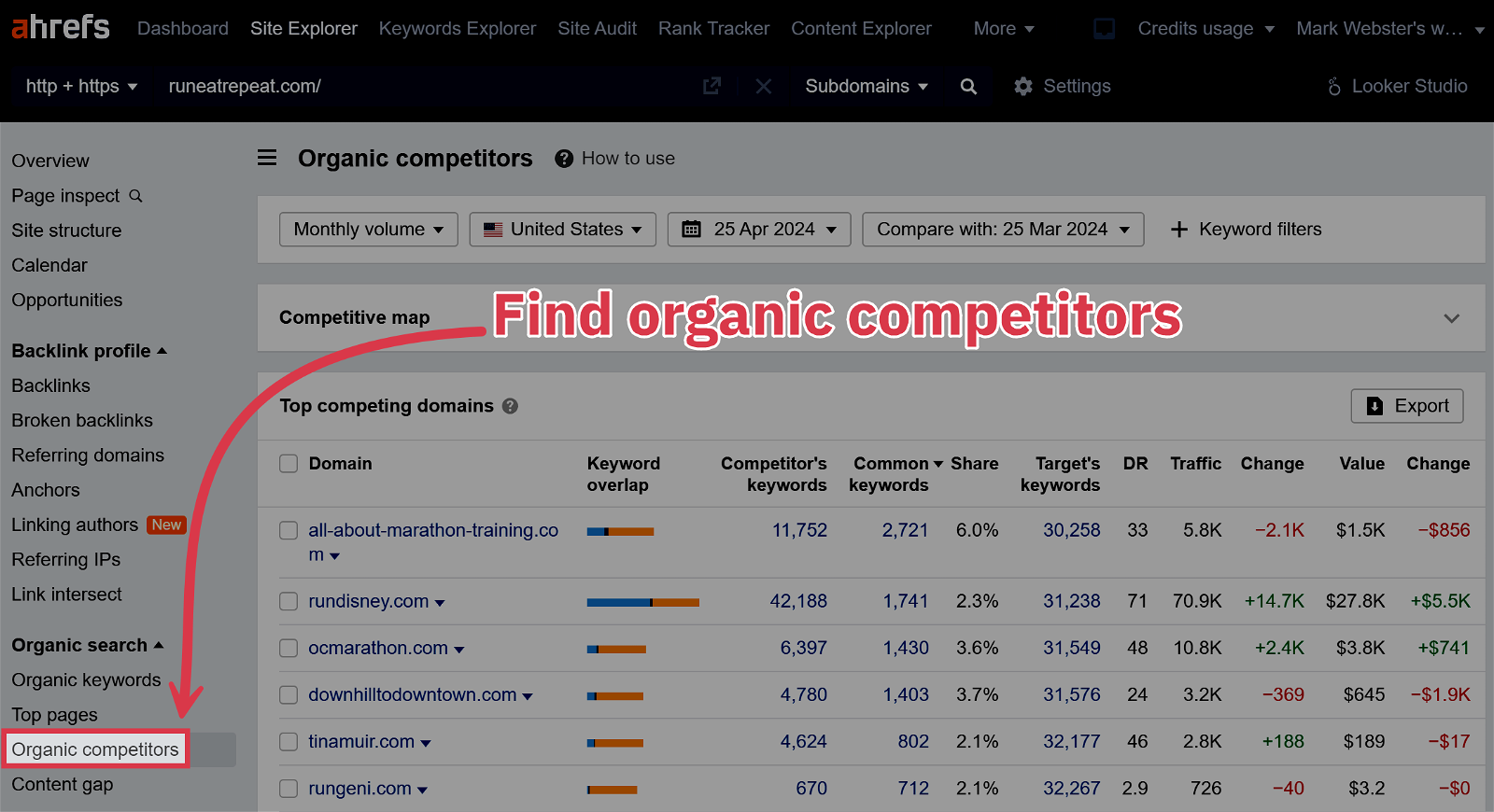
Get a free trial of SE Ranking, and run each blog through their Competitive Research report to check monthly traffic levels. This will tell you how many monthly visitors each site gets through search engines like Google.
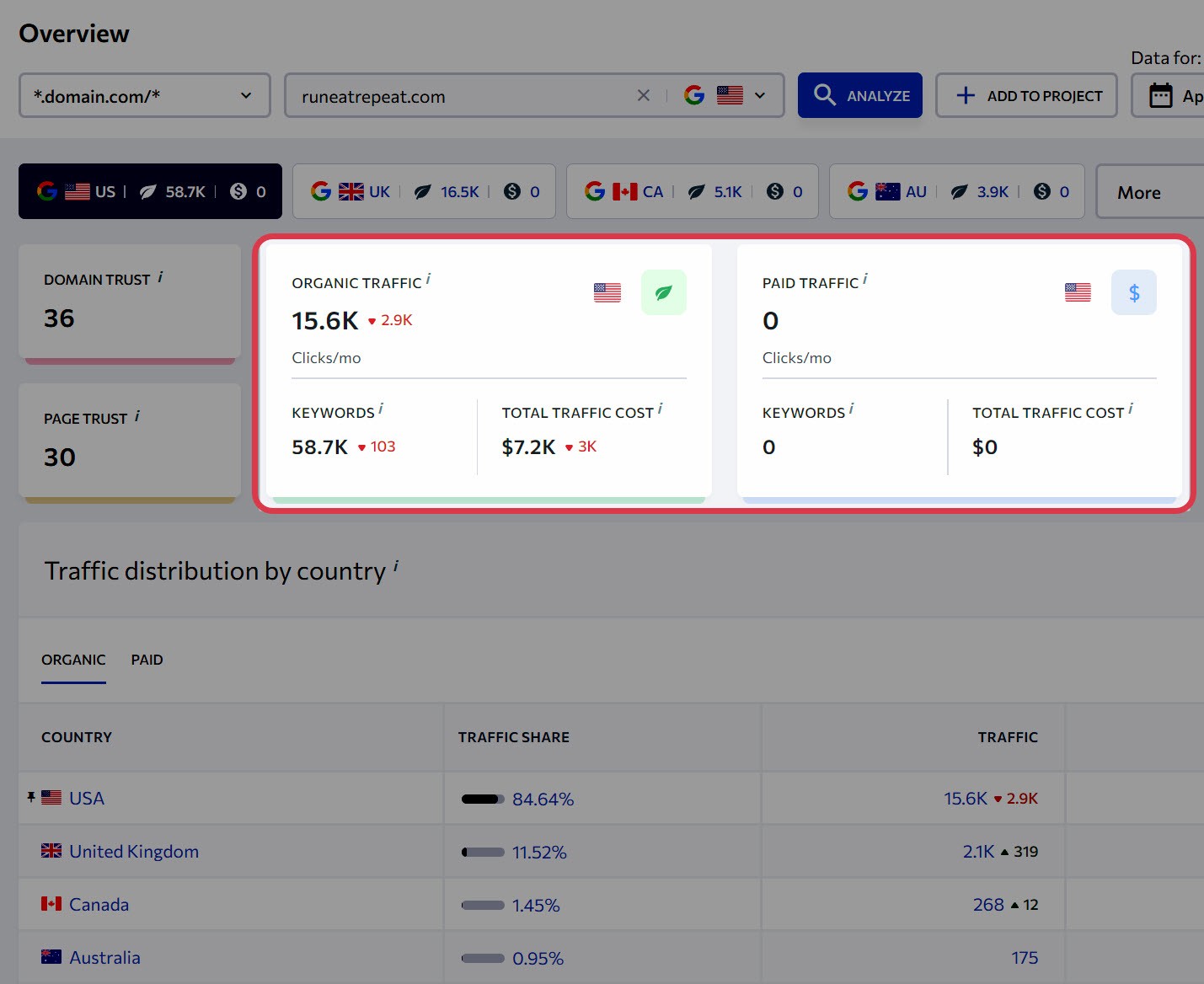
If you’re stuck between a few niches, use Google Trends to compare their overall popularity.
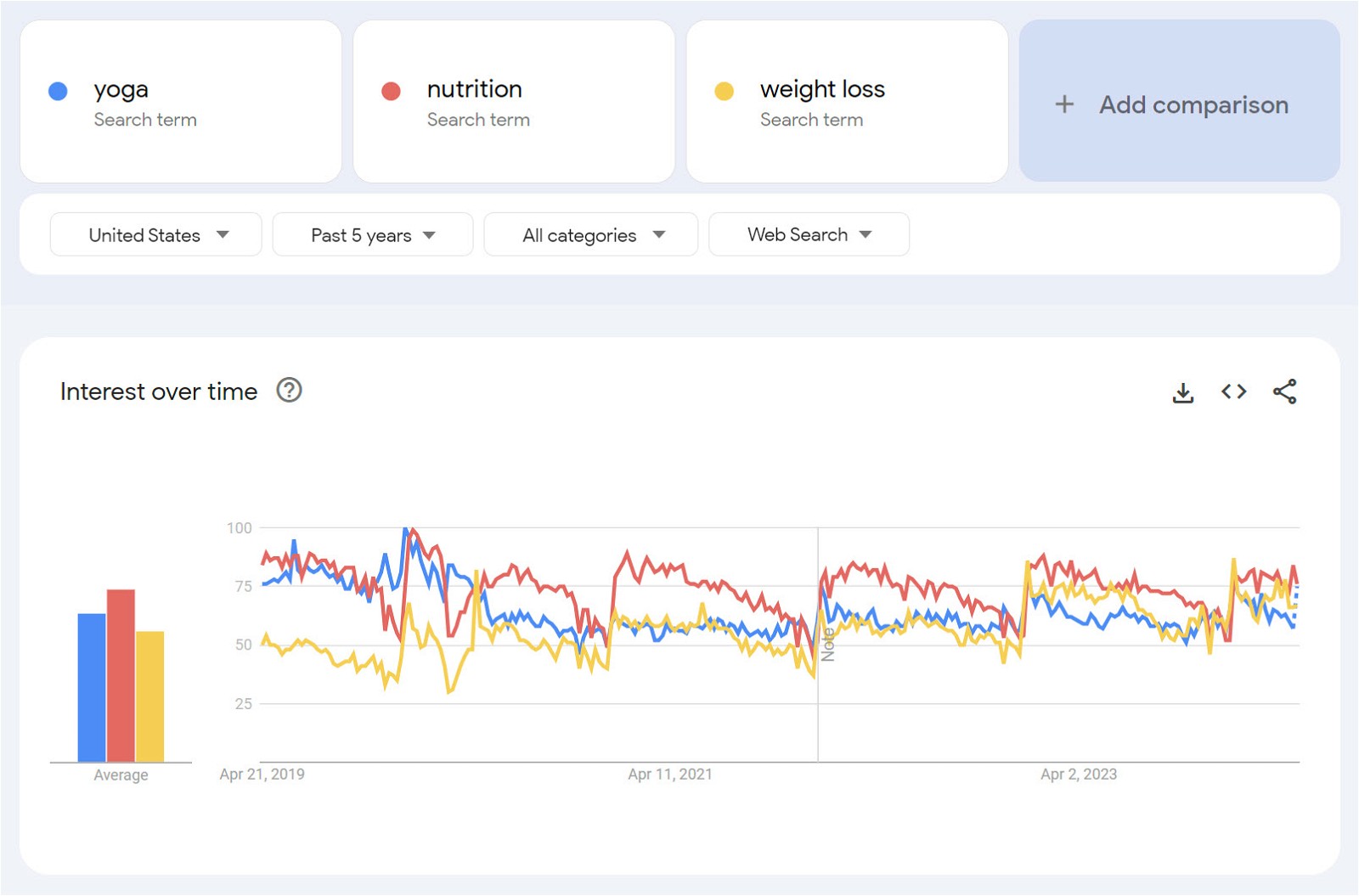
You can also watch our niche selection video for more guidance:
Don’t get stuck here! Once you have a viable niche you would enjoy writing about, go to the next step.
2 Pick the Best Blogging Platform
Once you pinpoint a lucrative fitness blog niche, the next step is choosing a blogging platform. A blogging platform lets you to write, publish, manage, and share fitness content online.
Some early-stage fitness bloggers start on free platforms like Medium or Blogger.
However, while these platforms make it simple to get started in the blogging world, they have numerous downsides:
- The platforms control your visibility, meaning you could lose readers if you don’t adhere to the site’s algorithm.
- It’s hard to monetize your blog on these platforms. You won’t get a lot of control over the affiliate links you can publish. You can’t use display ads to earn passive revenue or sell services or products directly.
- You won’t be able to customize the design or functionality of your blog, so you have almost no control over the reader experience.
We recommend building your own website instead of relying on social blogging platforms. Here’s why:
- You have full control over site design, functionality, and publishing content.
- No one can shut down your blog or remove/delete your content.
- You can monetize your fitness blog with affiliate marketing, display ads, selling products, and more.
- You can drive traffic to your site using search engine optimization (SEO), social media marketing, and other advertising methods.
- You can “own” your audience by building an email list and protecting yourself against search engine algorithm changes.
While many site builders are available, we recommend WordPress.org (not to be confused with WordPress.com).

WordPress.org is a free-to-use, open-source platform. You’ll need to buy your domain and hosting services (we’ll return to that moment). However, you’ll have access to a simple platform for creating a bespoke fitness blog experience.
The WordPress dashboard makes it easy to manage and optimize blogs; there are even plugins to help with things like SEO. Plus, you can choose from countless premium and free themes to make your site design stand out and integrate your blog with various marketing tools.
We use WordPress here at Authority Hacker, and it’s the platform powering around 43.1% of all worldwide websites.
3 Pick a Domain Name
Once you’re set up with WordPress.org, you’ll need a domain name for your site.
This is the unique address for your fitness blog, featuring your fitness company or blog name and an extension such as “.com”, or “.org”:

An effective domain name is crucial to building brand equity, capturing the attention of your fitness audience, and differentiating yourself from other fitness bloggers.
The right name will make it easier for customers to find your site and elevate awareness with word-of-mouth promotion. The best domain names are:
- Short and simple: Aim for no more than 14 characters, and avoid complex elements like unique spellings, hyphens, or numbers.
- Relevant to your industry: Including fitness terms, like “workout” or “exercise,” will give your fitness blog a search engine visibility boost.
- Niche-Specific: A great name will hint at what your blog is about.
- Unique: Use a trademark search tool to ensure you’re not choosing a name too similar to any other fitness blog.
- Memorable: Pick something witty or catchy to stick in visitors’ minds.
- Use a .com domain: People trust .com domains more than other options. If you have a great name with an unavailable .com, you can use a .com alternative.
Creating a memorable fitness blog name can be tricky, but tools like Brandsnap can help generate ideas for you in seconds.
Once you’ve found your name, you’ll need to purchase it. We recommend using Namecheap for this, as you can access .com domains for just $10 per year.
4 Buy WordPress Hosting
After you buy your domain name, you’ll also need to invest in a web hosting solution. Web hosting services give you the tools and infrastructure to store and maintain your fitness website on an online server.
Hosting is what makes your fitness blog accessible on the internet.
There are plenty of hosting companies you can consider. Bluehost is a popular (and cheap) choice for WordPress hosting, but we think SiteGround is the better choice overall. You get more functionality, ultra-fast performance, and excellent security for only a dollar more.
Just remember, the renewal cost for SiteGround is more expensive than the introductory first-year price. To get started with SiteGround hosting:
Step 1: Visit SiteGround’s WordPress hosting page.
Step 2: Scroll to the pricing section, and choose your plan. We recommend the cheapest StartUp plan for beginners.
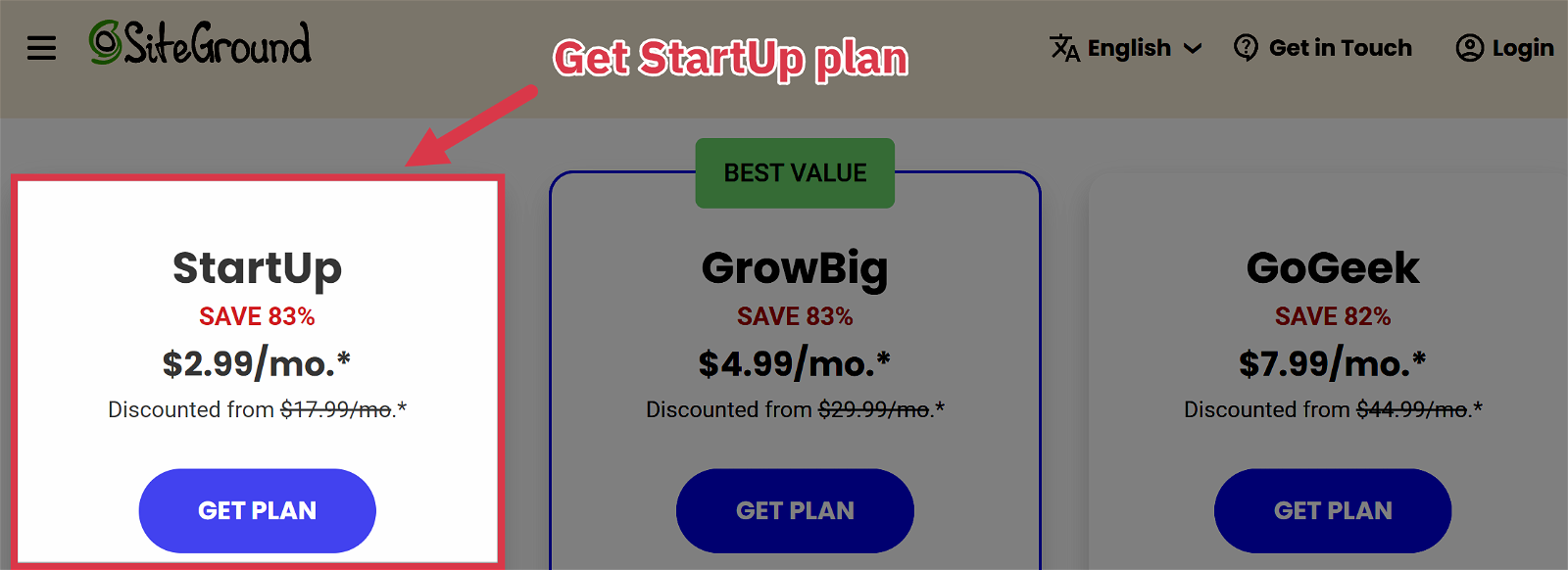
Step 3: Click “Get Plan”, and choose the “Existing Domain” option, then enter the domain name you bought previously.
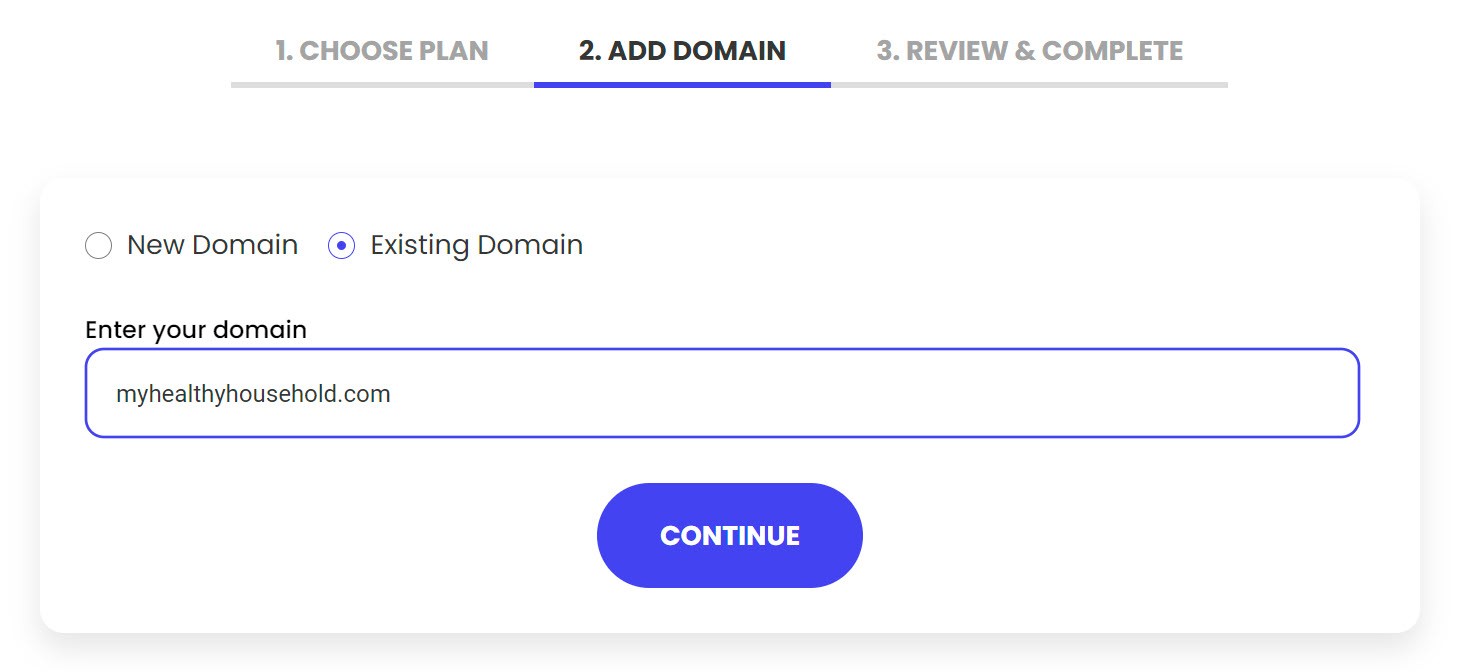
Step 4: Select “Continue”, and enter your account information.

Step 5: Add payment info and choose your subscription period. You’ll get the best deal by choosing a 12-month plan, but note that the price will increase when it renews.

Step 6: Ignore the “extra services” options. You won’t need these for your new fitness blog, and you can always add them later if necessary.
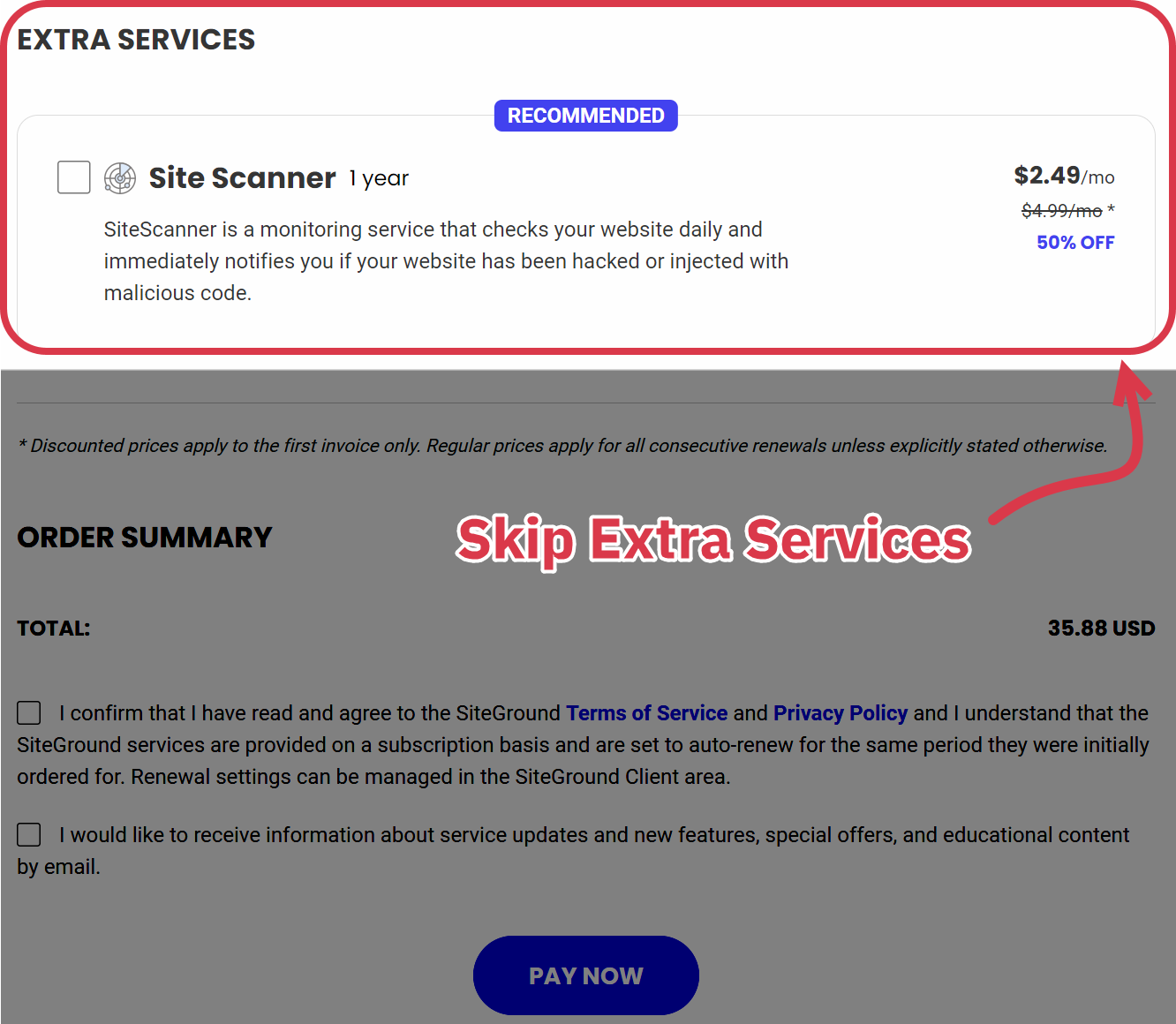
Step 7: Point your Namecheap domain name to your SiteGround server. You can follow how to do this on this guide, or contact the Siteground team for support.
That’s it! Now, your WordPress website will have the domain name you selected and be hosted on SiteGround’s platform. You’re ready to start building your website!
5 Pick Your Fitness Blog Theme
Now you have a hosting provider, you’re ready to start making changes to your site’s appearance and functionality. To do this, you’ll need a WordPress theme.
A blog theme on WordPress is a selection of files that determine your blog’s structure, layout, and appearance.
You’re going to want a fitness-friendly theme. This means something that includes visuals relevant to fitness and any specific features you might need, like video sections or session booking pages.
While plenty of free WordPress themes are available, we recommend ensuring your chosen option has a “premium upgrade” available.
Free themes are great to start with, but if you can’t access new features as your fitness blog grows, this could harm your performance.
Some of the best freemium themes for fitness blogs we’ve tried include GeneratePress, Astra, and Kadence. They’re all extremely user-friendly and are some of the fastest themes around.
Whichever freemium theme you choose, make sure it’s:
- Mobile-friendly (responsive)
- Lightweight and loads quickly
- Highly customizable
- Designed by a reputable theme builder. (Look for positive reviews)
- Packed with design components for a fitness-focused business
When you have your theme, here’s how you can add it to WordPress:
Step 1: Log into your WordPress dashboard.
Step 2: In the left sidebar, click on Appearances > Themes.
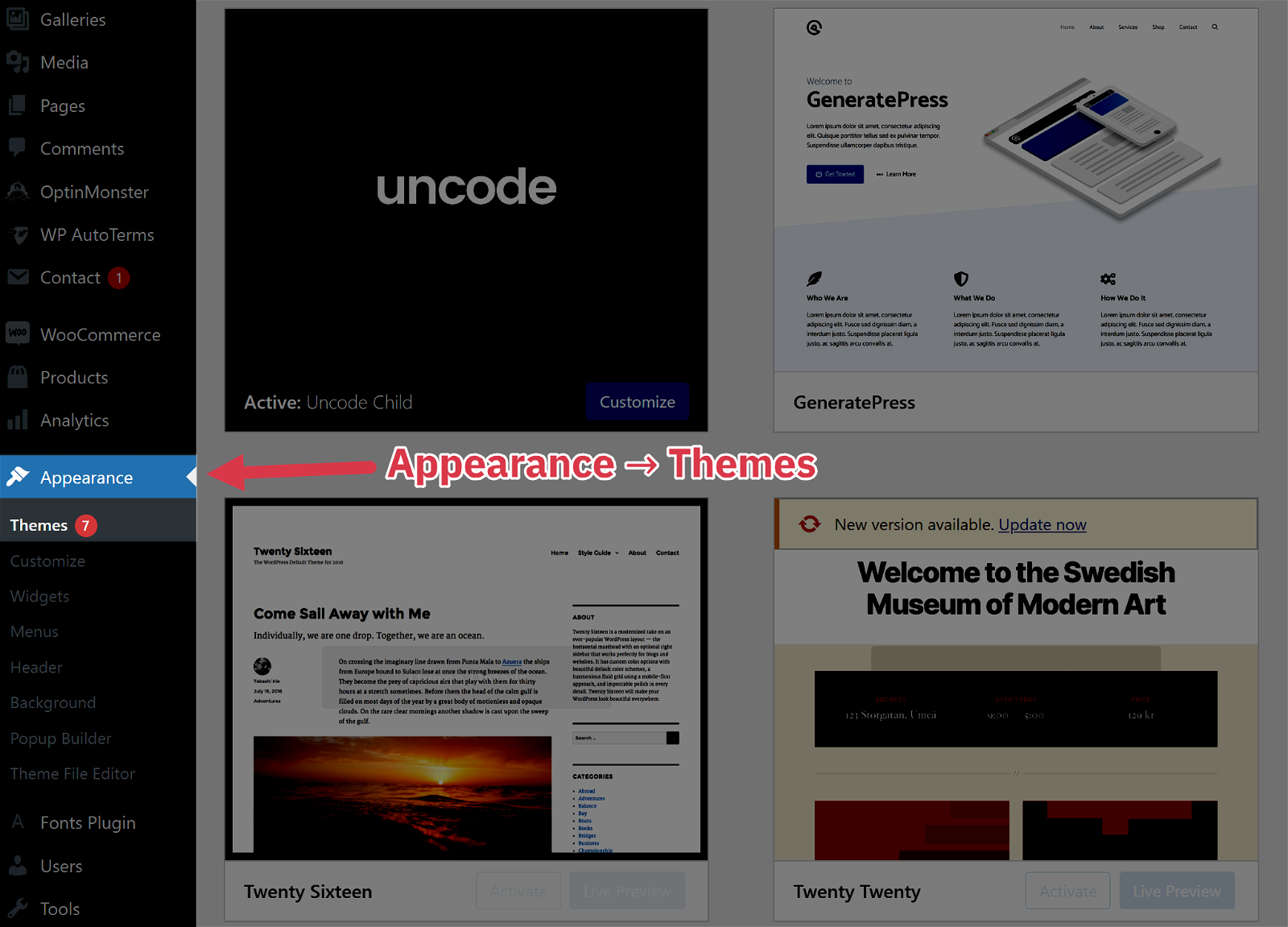
Step 3: Click the “Add New” button.
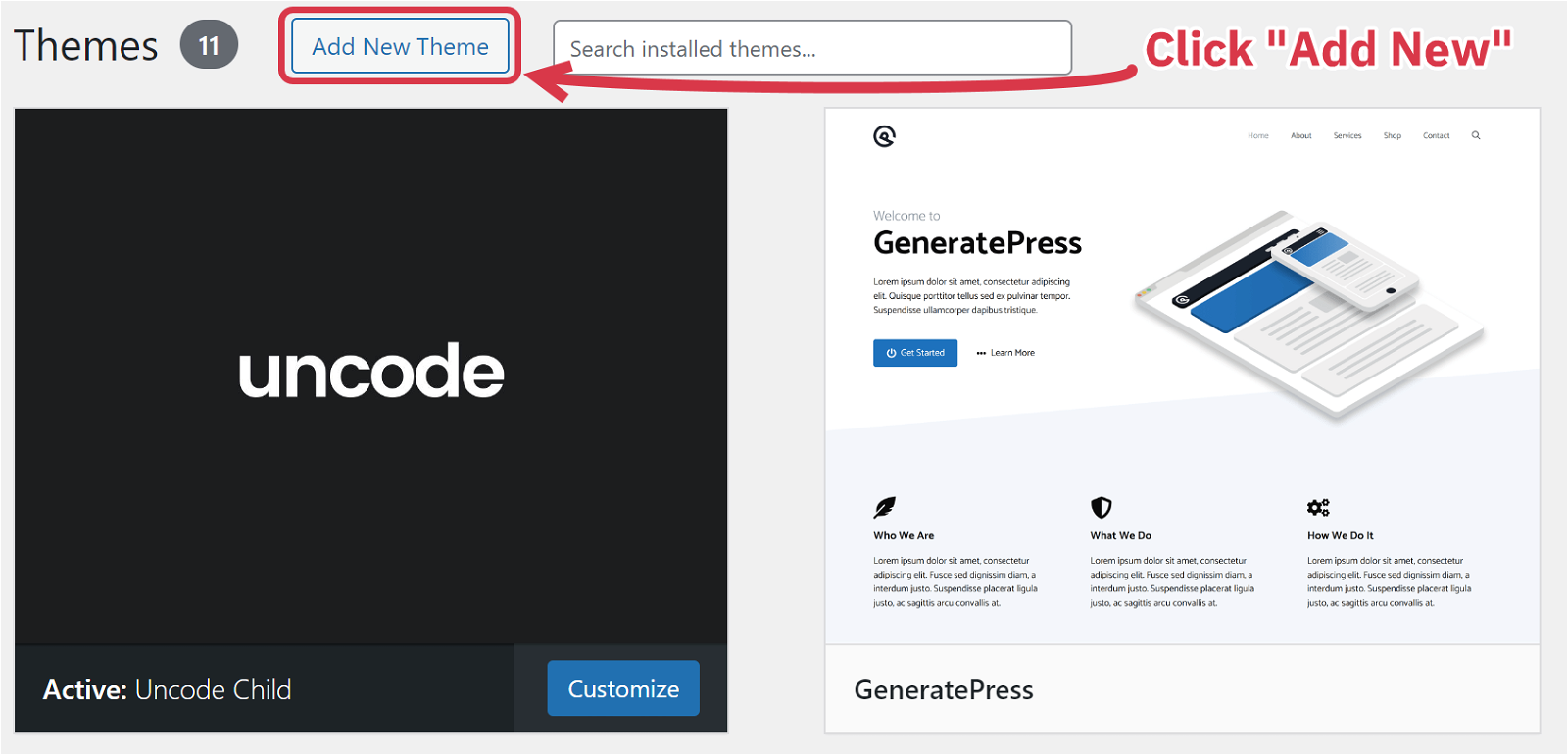
Step 4: Search for the theme you want to use and click “Activate”.
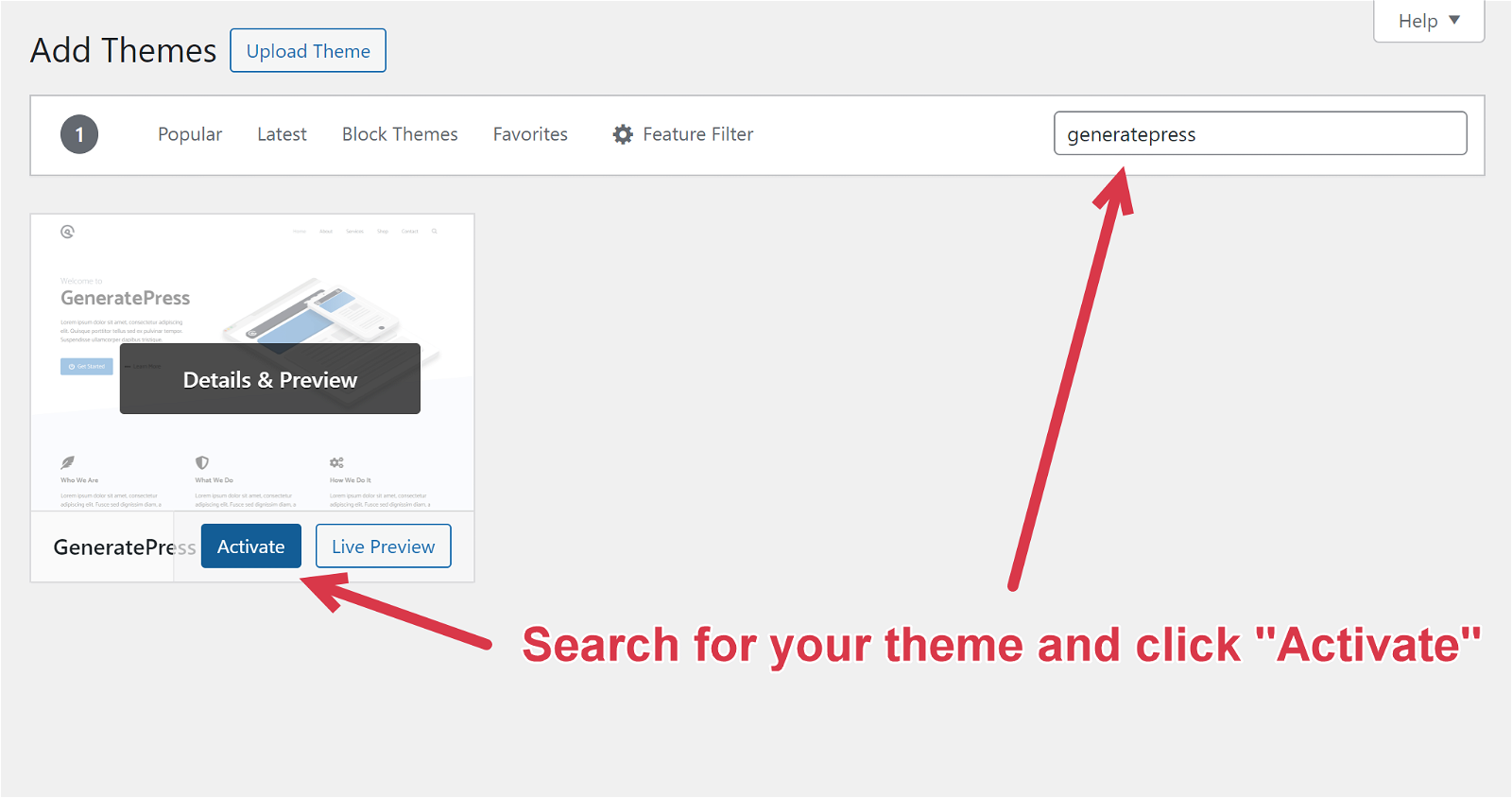
You can then dive into the theme settings on your WordPress website, customize colors, fonts, and layouts, and add your own fitness content and images.
6 Create a Logo & Color Palette
After installing your WordPress theme, it’s time to start designing it. Here are a few fitness-specific design tips:
- Choose a bold, energetic backdrop: think bright colors like red, blue, or yellow.
- Embrace a dynamic layout with eye-catching visuals and clear calls to action.
- Integrate fitness-inspired visuals like dumbbells, running shoes, or fitness trackers.
- Try angular UI elements to convey strength and intensity.
After creating the design and layout, you’ll need to configure a color scheme. Much of your blog’s personality will come from the colors you use. For example, a blog centered on high-intensity workouts and pushing limits can use a color palette that includes powerful reds, electric blues, and motivating oranges.
To create a cohesive color scheme, I recommend using Coolors. It’s an intuitive tool that generates complementary colors that will make your fitness blog pop.
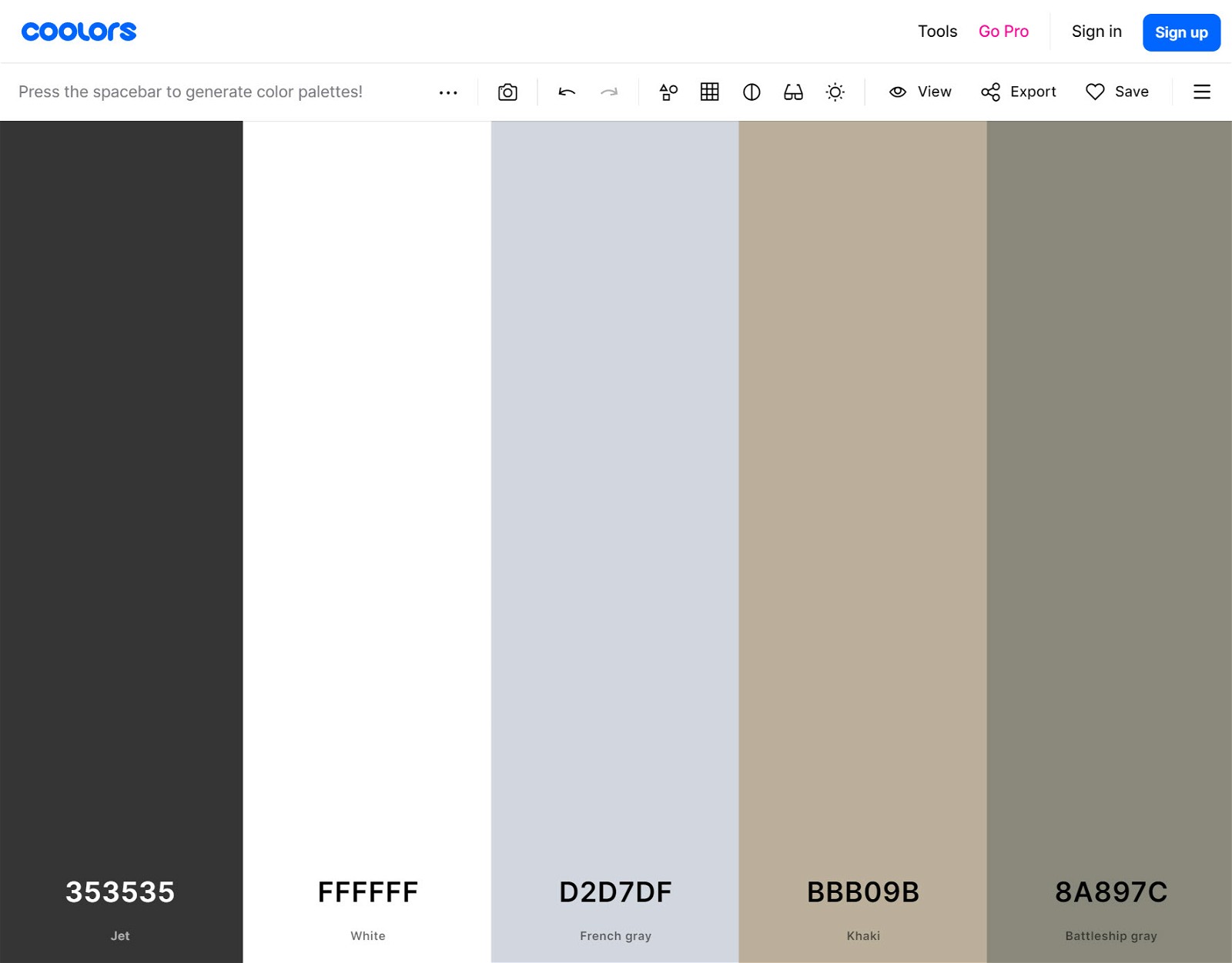
Next up is creating the logo. I suggest using Canva for this. There are hundreds of fitness and gym logo templates that you can mix and match to create something unique that represents your brand.

Search for “fitness logos” or “gym logos” and make your pick. You can edit the logo to reflect your brand name and color scheme.
7 Create Essential Pages
With your fitness blog’s design ready, it’s time to fill it with engaging content. Start by creating these essential pages that every successful fitness blog should have.
Homepage
Your homepage serves as the central hub of your fitness blog. It should clearly communicate what your blog is about and showcase your latest posts and most popular content. Use eye-catching visuals and compelling headlines to draw readers in.
About Page
The About page is where you introduce yourself to your audience and share your fitness journey. Explain what inspired you to start this fitness blog and highlight any relevant certifications or experience you have in the fitness industry.
Contact Page
Include a contact page with a user-friendly form that allows readers to reach out to you easily. You can also provide your email address and social media handles to encourage engagement. Adding your location can help improve your blog’s local SEO.
Legal Pages
Don’t forget to include essential legal pages such as a Privacy Policy and Terms & Conditions. These pages outline your data handling practices, user rights, and expected site behavior. Emphasize that your fitness content is for informational purposes only and should not be considered medical advice.
To create your legal pages hassle-free, use PrivacyPolicies.com.
Creating new pages on your WordPress fitness blog is a breeze. Simply log in to your WordPress dashboard, navigate to the left sidebar, and click on Pages > Add New. From there, you can craft your content and hit publish!
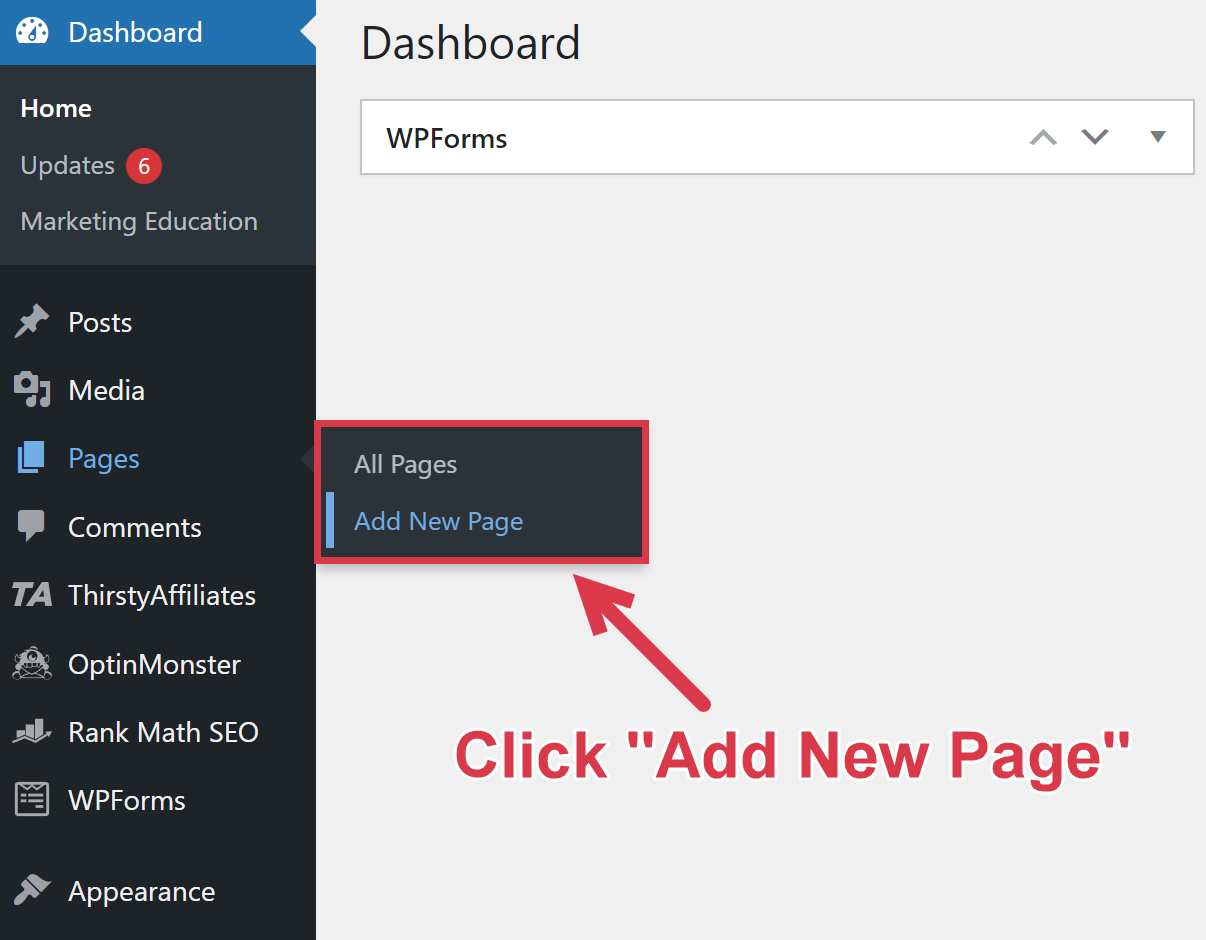
8 Start Creating Fitness Blog Content
Now we come to arguably the most important part of creating your fitness blog: producing content. With your fitness niche in mind, you should already know the types of content you’ll produce.
For instance, if you’re focusing on family fitness, you might create articles discussing popular exercise options for kids and parents or review home fitness equipment suitable for all ages.
Crucially, your content should always be keyword-focused. This means focusing on specific terms you know your audiences will search for.
A keyword-focused strategy will ensure your content ideas drive traffic to your site so you can earn money from your blog.
Start by creating a list of potential terms relevant to your fitness niche, then use a tool like Ahrefs to examine each term’s potential monthly search volume and competition level.
Often, the more general fitness blog topics, like “exercise tips”, will have higher volume but a lot of competition, making it harder to rank. That’s why looking for more specific, low-competition keywords that still deliver plenty of traffic is helpful.
With the Ahrefs Keyword Explorer, you can search for a specific term and see suggestions of “related” options that may be easier to rank for. For instance, with the term “fitness tips”, we get the following related options:
| Keyword | Search Volume | Keyword Difficulty |
| Barbell row muscles worked | 2600 | 19 |
| How heavy is a barbell | 1200 | 4 |
| How much is a barbell | 400 | 12 |
| How to do barbell hip thrusts | 200 | 12 |
| How long is a 45lb barbell | 70 | 1 |
Use these keywords to create 10 blog post titles. Here are some examples:
- Barbell Row Muscles Worked: Back & Biceps Gains
- How Heavy Is a Standard Barbell? Weight Explained
- Barbell Prices: How Much Should You Spend?
- Barbell Hip Thrusts: Technique, Form, and Benefits
- 45lb Barbell Dimensions: Length and Weight Guide
Once you have your titles, you can start writing. Use these tips to write the best blog content possible:
- Know your target audience: Learn as much about them as possible and tailor your content to their goals and pain points. The advice you give professional athletes should be very different from the tips you share with beginners.
- Show expertise and experience: Give your readers (and Google) a reason to trust your insights. Share your experience as a fitness professional, using anecdotes from your life. If you share specific fitness advice, validate it with links to reports or data.
- Draw insights from multiple sources: Speak to other personal trainers, fitness coaches, or medical professionals in your industry, and use their quotes in your content. You can even seek out fitness scientists and experts on channels like HARO to give your content more credibility.
- Use visuals: Sidestep the copyright issues of using the images and videos created by other fitness professionals by making your own. Record your own fitness how-to videos, and take pictures of yourself using fitness equipment.
- Format your content effectively: Use a table of contents to help users navigate to specific parts of long-form posts. Break up sections of your content with headers and bullet points, and add context to your recommendations with images.
- Engage your community: Ask your readers questions throughout your fitness content, and encourage them to connect with you through a comment section or social media.
The golden rule to starting a fitness blog that drives results is consistently delivering valuable and engaging content.
9 Optimize for EEAT and YMYL
Many fitness and wellness topics fall under Google’s YMYL (Your Money Your Life) label, which includes topics that directly influence a person’s health and well-being.
As such, when a user searches for fitness-related queries, like “how to safely lose weight,” Google prioritizes posts written or reviewed by qualified fitness professionals.
Right now, if you want to write on YMYL fitness topics but you’re not a certified fitness expert, you have two options:
- Hire a qualified fitness professional to write blog posts
- Have a qualified fitness expert review your posts
Remember to give the fitness professional a dedicated author or reviewer page showcasing their credentials and experience. This will ensure your article gets a fair chance to rank – provided it’s still high-quality, valuable content.
To further increase your chances of ranking your fitness content, you should also optimize your posts for EEAT – Experience, Expertise, Authoritativeness, and Trust.
Google uses these metrics to determine the trustworthiness of your website, and it’s especially important for sites in YMYL niches like health and fitness.
Our video will tell you everything you need to know about EEAT optimization for your fitness blog:
10 Promote Your Fitness Blog
While your blog posts might not instantly appear in search results, you can still drive traffic to them early on. Here are a few effective promotion tactics for fitness blogs:
- Engage in fitness forums. Dive into Facebook groups, subreddits, and Quora spaces related to fitness, nutrition, and wellness. Answer questions, offer insights, and establish yourself as a knowledgeable resource in the community.
- Create and share workout videos or tutorials. Use your phone or a camera to record short, informative videos demonstrating proper exercise form, sharing workout routines, or providing fitness tips. Post these videos on YouTube, Instagram, and TikTok, linking back to your blog for more in-depth content.
- Collaborate with other fitness bloggers or influencers. Reach out to bloggers or influencers in the fitness space and propose a collaboration, such as writing guest posts for each other’s blogs, co-hosting a webinar, or creating a joint workout challenge.
- Attend fitness events and expos. Look for local or virtual fitness events like wellness festivals, fitness conferences, or trade shows. Network with other attendees and spread awareness of your blog.
Remember, effective promotion is not about blatant self-promotion. Focus on providing genuine value, sharing your knowledge and experiences, and building authentic connections.
11 Monetize Your Fitness Blog
Once your fitness blog is attracting visitors, it’s time to make some money. Here are some effective strategies for monetizing your blog:
Affiliate Marketing
Recommend fitness equipment, workout gear, and nutritional supplements you’ve personally tested and believe in. You’ll earn a commission when someone purchases using your unique affiliate link.
Why It’s Great: Fitness products often have high profit margins, which translates to generous affiliate commissions.
Get Started: Check out our comprehensive guide on starting affiliate marketing and explore our curated list of the top fitness affiliate programs.
Create and Sell Your Own Products
Develop your own fitness programs, workout plans, or branded fitness products that cater to your target audience’s specific needs and preferences.
Why It’s Great: You fully control pricing, marketing, and branding. Plus, Google’s September 2023 Helpful Content Update favors blogs that offer products, boosting your site’s visibility.
Get Started: Use platforms like Teachable or Thinkific to create and host fitness courses. To develop your own fitness products, collaborate with reputable manufacturers and sell them under your brand name.
Pro Tip: Begin by promoting an affiliate’s fitness programs or products. Analyze what resonates with your audience, then create similar offerings under your own brand.
Offer Personal Training or Coaching Services
Become a certified fitness trainer or coach and offer personalized guidance to help others reach their fitness goals.
Why It’s Great: You can build a thriving career as a fitness coach, using your website as a powerful marketing tool.
Get Started: Obtain a recognized fitness coaching certification and promote your services on your blog. Consider creating a personal blog to foster a stronger connection with your audience and showcase your expertise.
Display Ads
Earn revenue by displaying ads to your blog visitors. You’ll be paid based on the number of ad views or clicks.
Why It’s Great: It’s a passive income stream that doesn’t require you to sell products or services to your audience.
Get Started: Ezoic is a user-friendly platform for quickly setting up ads on your site. As your traffic grows, consider switching to higher-paying ad networks like Mediavine (requires >50,000 monthly visitors) or Raptive (requires >100,000 monthly visitors).
For the best results, experiment with different monetization methods to find the right balance for your fitness blog.
Summing Up
We’ve covered the essential steps toward starting a successful fitness blog…
…but there’s so much more I couldn’t cover.
Blogging has a steep learning curve, and if I tried to cover every important tip and tactic to maximize your chances of success, this guide would turn into a full-length book!
To help you master the key strategies to make your fitness blog more likely to thrive, we put together a free training packed with some of the most effective secrets and techniques we’ve discovered in over a decade of profitable blogging.
On average, new bloggers who undergo this free training are 83% more successful than those who don’t.
FAQs
It is worth starting a fitness blog if you love health and fitness and want to share that love while making money. A fitness blog lets you help others reach their health goals, teach them about fitness, and build a supportive community.
You can earn money through different ways like affiliate marketing, sponsored posts, ads, and offering personal coaching services.
Fitness blogs make money through a variety of channels, and their earning potential can differ greatly depending on several factors such as the quality of content, level of audience engagement, monetization strategies, and the specific niche. Common revenue streams include affiliate marketing, sponsored posts, advertisements, product sales, and services offered.







